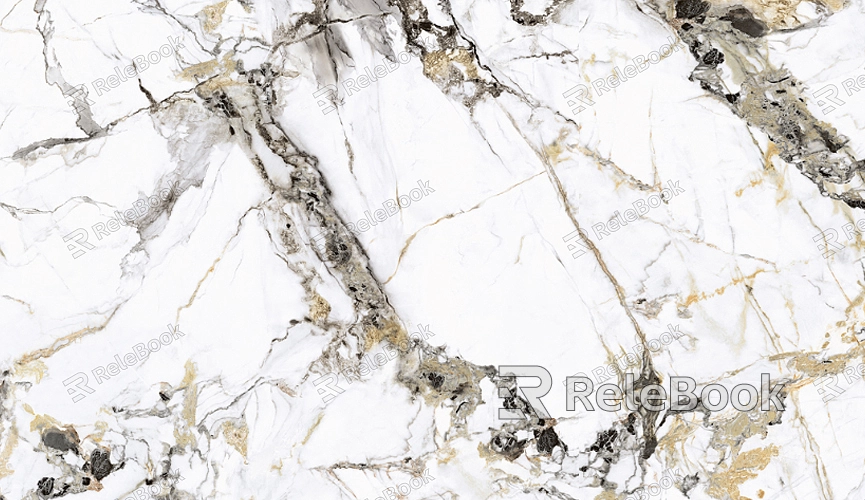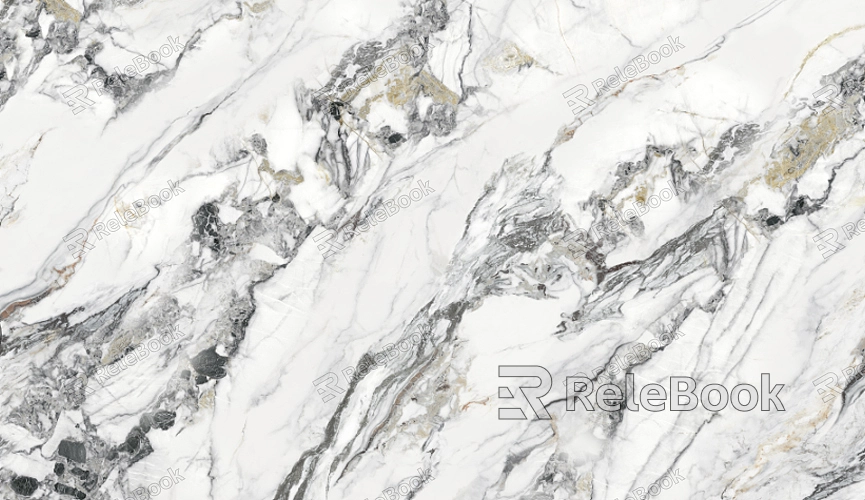How to Tile Textures Without Repetition?
Tiling textures, especially on large surfaces, can add intricate layers and a rich visual experience to a piece. However, the challenge many designers face is how to effectively tile textures without repetition. This article will explore that topic in depth, offering solutions and practical techniques to help readers achieve unique and creative texture effects in their work.

The Basics of Texture
Before diving into how to tile textures, it’s important to understand the basics of texture itself. A texture refers to the details and feel of a surface—whether it's rough, smooth, hard, or soft. In digital art, textures are typically represented by image files that can be processed and edited using software.
Types of Textures
When choosing textures, it's crucial to understand the different types available. Common types of textures include:
Natural Textures: such as wood, stone, and leaves, which have a unique, organic beauty.
Abstract Textures: Created through a combination of colors and shapes, often used for backgrounds and decorative elements.
Geometric Textures: Made up of regular patterns, commonly used in modern design.
Understanding these types of textures will help designers select the right textures for their projects and avoid repetition when tiling them.

Techniques to Avoid Repetition in Tiling
To tile textures without repetition, several techniques can be employed. Here are some of the most common methods:
1. Using Seamless Textures
Seamless textures are a frequently used technique by designers. These textures can be perfectly connected at the edges so that no visible seams appear, regardless of how the textures are tiled. Seamless textures are typically created through image editing software to ensure that the edges of the texture match naturally.
2. Randomized Tiling
By randomizing the arrangement of textures during tiling, repetition can be effectively avoided. Designers can adjust the size, rotation, and transparency of the texture to create a richer and more varied overall look.
3. Texture Transformations
Texture transformations involve altering the texture in various ways, such as scaling, rotating, or mirroring. These transformations allow the same texture to present different visual effects, reducing the appearance of repetition.
4. Combining Different Textures
Another way to create unique effects is by combining different textures. For example, merging wood grain and metal textures can create a fresh and innovative look. This method not only adds visual richness but also helps avoid the monotony of a single texture.
Applications of Tiling Textures
After understanding how to tile textures without repetition, let’s look at some practical application scenarios for these techniques.
1. Game Development
In game development, the use of textures is critical. Designers often need to create textures for the ground, walls, characters, and objects in a scene. In such cases, avoiding repetition is key to enhancing the visual quality of the game. For example, in a forest scene, designers can use seamless tree and grass textures, combined with varied colors and shadows, to make the scene more realistic.
2. Animation Production
In animation production, textures also play a significant role. By adding textures, designers can add detail to characters' clothing, backgrounds, and props. Techniques such as texture transformations and randomized tiling can ensure that each scene presents a unique look, enhancing the audience's visual experience.
3. Product Design
In product design, textures not only affect appearance but also relate directly to the feel and user experience of the product. Designers can apply different textures to product surfaces, using variations in color and gloss to enhance the product's appeal and market competitiveness.
Recommended Tools and Software
To better tile textures, designers need to master some professional tools and software. Here are some recommended tools:
1. Adobe Photoshop
As an image editing software, Adobe Photoshop offers a wealth of functions for creating seamless textures and performing texture transformations. Designers can use its powerful layer capabilities, filters, and transformation tools to achieve unique texture effects.
2. Blender
Blender is free, open-source 3D creation software widely used in animation, game development, and product design. Blender offers powerful texture mapping features, allowing designers to apply multiple textures to 3D models for realistic effects.
3. Substance Painter
Substance Painter is specialized software for texture painting, capable of delivering highly detailed and realistic effects. Designers can paint textures directly onto models, quickly achieving various styles.
Tips for Practice
In practice, mastering a few tips can help designers tile textures more effectively.
1. Build a Diverse Texture Library
Building a diverse texture library provides designers with more options. During the creative process, different textures can be called upon as needed to achieve the best results.
2. Use Real-Time Previews
Using real-time preview functions allows designers to see the results immediately as they adjust textures. This helps them better judge the suitability of the texture and make adjustments accordingly.
3. Continuous Testing
After completing texture tiling, repeated testing is essential. Designers can test the texture effects in different scenes and lighting conditions to ensure the final result is ideal.
Future Trends in Texture Tiling
With the advancement of technology, texture tiling techniques continue to evolve. In the future, textures will focus more on personalization and intelligence, with designers leveraging AI technologies to automatically generate unique textures, further enhancing creative efficiency and outcomes.
By mastering techniques like seamless textures, randomized tiling, and texture transformations, designers can achieve rich and varied visual effects without repetition. Through exploration and practice, designers will be able to create unique works of art. To access more high-quality 3D models and textures, visit Relebook, where you'll find endless inspiration and creative possibilities.
FAQ
What is a seamless texture?
A seamless texture can be perfectly connected at the edges, allowing it to be tiled without visible seams. This is ideal for covering large areas.
How can I randomize texture tiling?
By adjusting parameters such as the size, rotation angle, and transparency of a texture, you can achieve random tiling, creating a more varied overall look.
Why is it important to avoid texture repetition?
Avoiding texture repetition improves the visual quality and realism of a design, making it more engaging and multi-dimensional.
What software can be used for texture tiling?
Common texture tiling software includes Adobe Photoshop, Blender, and Substance Painter, all of which offer powerful tools and features to help designers achieve high-quality texture effects.

